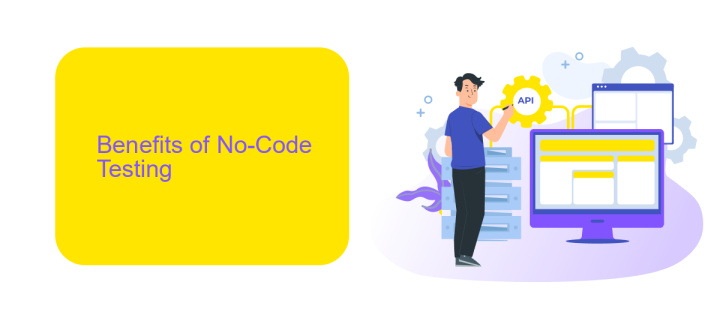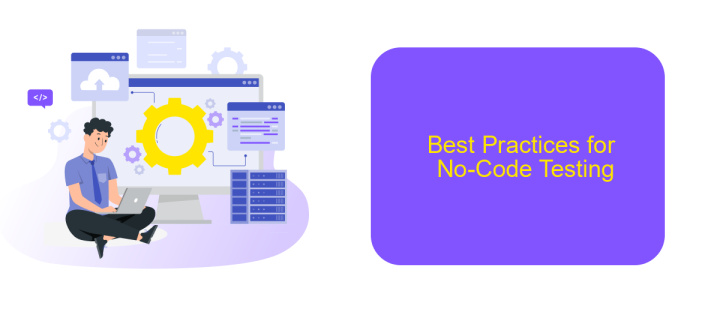No-Code Testing
No-code testing is revolutionizing the software development landscape by empowering individuals without programming expertise to create and execute tests. This approach democratizes quality assurance, making it accessible to a broader audience and accelerating the development cycle. In this article, we will explore the benefits, tools, and best practices of no-code testing, highlighting its impact on modern software projects.
Introduction
No-Code Testing represents a paradigm shift in how software testing is approached, enabling individuals without a technical background to create and execute tests. This approach democratizes the testing process, making it more accessible and efficient for a broader range of users.
- Empowers non-technical users to engage in testing
- Reduces dependency on specialized developers
- Speeds up the overall testing cycle
- Facilitates better collaboration across teams
One of the key aspects of No-Code Testing is its integration capabilities. Tools like ApiX-Drive play a crucial role in this ecosystem by allowing seamless integration with various applications and services. This not only simplifies the testing process but also ensures that tests are comprehensive and cover all necessary scenarios. By leveraging such integrations, teams can enhance their testing efficiency and deliver more reliable software products.
Benefits of No-Code Testing

No-Code Testing offers numerous benefits, making it an attractive option for businesses looking to streamline their software development processes. One of the primary advantages is the significant reduction in time and effort required to create and execute tests. With no-code platforms, even individuals without technical expertise can design and run tests, democratizing the testing process and allowing for faster iterations and deployments. This accessibility ensures that more team members can contribute to quality assurance, leading to more robust and reliable software.
Another key benefit is the ease of integration with other tools and services. No-code testing platforms often come with built-in integrations or easy-to-use APIs, such as those provided by ApiX-Drive, which facilitate seamless connectivity between different systems. This capability allows for automated workflows and real-time data synchronization, enhancing the overall efficiency of the testing process. Additionally, the visual nature of no-code platforms simplifies the debugging and maintenance of tests, reducing the dependency on specialized developers and lowering costs.
Challenges of No-Code Testing

No-code testing offers many advantages, but it also comes with its own set of challenges. One of the primary issues is the limited customization options compared to traditional coding methods. This can make it difficult to handle complex test scenarios that require a high degree of specificity.
- Integration Limitations: No-code platforms often struggle with integrating seamlessly with all types of software and services. Using tools like ApiX-Drive can help mitigate these issues by providing more flexible integration options.
- Scalability Concerns: As projects grow, the limitations of no-code testing tools can become more apparent, making it harder to scale effectively.
- Performance Bottlenecks: No-code solutions may not always be optimized for performance, which can lead to slower test execution times and impact overall efficiency.
- Dependency on Platform Providers: Relying on a no-code platform means you are dependent on the provider for updates, features, and support, which can be a risk if the provider discontinues the service or changes its policies.
Despite these challenges, no-code testing remains a valuable tool for many organizations, especially when combined with complementary services like ApiX-Drive. By understanding and addressing these limitations, teams can better leverage the benefits of no-code testing while minimizing its drawbacks.
Best Practices for No-Code Testing

No-code testing offers a streamlined approach to software quality assurance, enabling teams to create and execute tests without writing code. To maximize the effectiveness of no-code testing, it's essential to follow best practices that ensure comprehensive coverage and reliable results.
Firstly, prioritize creating clear and concise test cases that cover all critical functionalities of the application. This ensures that the most important aspects are thoroughly tested. Secondly, make use of visual tools and dashboards to monitor test progress and outcomes, allowing for quick identification and resolution of issues.
- Define specific goals and objectives for each test case.
- Leverage reusable test components to save time and maintain consistency.
- Integrate with other tools such as ApiX-Drive to automate workflows and streamline processes.
- Regularly update and maintain test cases to adapt to changes in the application.
By adhering to these best practices, teams can enhance their no-code testing efforts, ensuring a higher quality product and a more efficient testing process. Utilizing integration services like ApiX-Drive can further optimize workflows, making the entire process seamless and more effective.
- Automate the work of an online store or landing
- Empower through integration
- Don't spend money on programmers and integrators
- Save time by automating routine tasks
Future of No-Code Testing
The future of no-code testing looks incredibly promising as it democratizes the ability to create and execute tests without requiring deep technical knowledge. This approach empowers non-developers, such as QA analysts and business stakeholders, to participate actively in the testing process. As a result, organizations can expect faster development cycles, reduced costs, and improved software quality. The evolution of AI and machine learning will further enhance no-code testing platforms, allowing them to predict potential issues and automatically generate test cases, making the process even more efficient.
Moreover, the integration capabilities of no-code testing tools are set to expand significantly. Services like ApiX-Drive will play a crucial role in this transformation by offering seamless integrations with various applications and platforms. This will enable users to automate complex workflows and synchronize data across multiple systems effortlessly. As a result, teams can focus more on strategic tasks rather than getting bogged down by manual testing processes. The future of no-code testing is not just about simplifying testing but also about creating a more collaborative and agile development environment.
FAQ
What is No-Code Testing?
Who can benefit from No-Code Testing?
How does No-Code Testing improve the software development process?
Can No-Code Testing be integrated with other tools and services?
What are the limitations of No-Code Testing?
Apix-Drive is a universal tool that will quickly streamline any workflow, freeing you from routine and possible financial losses. Try ApiX-Drive in action and see how useful it is for you personally. In the meantime, when you are setting up connections between systems, think about where you are investing your free time, because now you will have much more of it.


